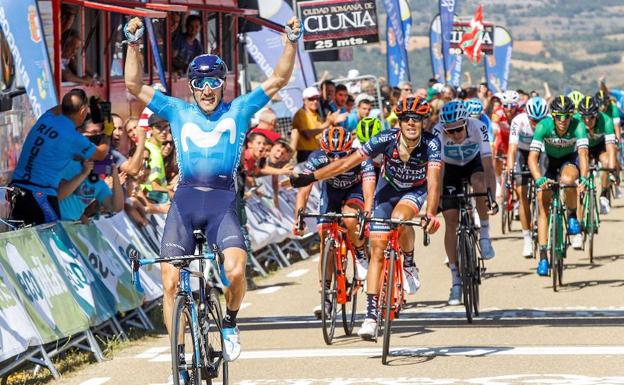The regional tour will cover the Camino de Santiago from today to Saturday, passing through the provinces of Burgos, Palencia, and León.
The 34th edition of the Vuelta Ciclista a Castilla y León is here. There will be three stages with the Camino de Santiago as the main theme. This is a way to pay tribute and explore a route that crosses the autonomous community from east to west along the so-called Camino Francés, as well as serving as a promotional attraction for a route traveled by thousands of pilgrims each year. Three stages will feature the provinces of the region through which the aforementioned route runs: Burgos, Palencia, and León. The Castilian-Leonese tour will take place from this Thursday to next Saturday with 17 teams competing. A total of 517 kilometers will follow the Camino de Santiago.
The first stage, which runs through Burgos, will run from Belorado, the first town in this province along the French Way, to Castrojeriz, covering 181 kilometers. It will pass through three mountain passes, one category 1, one category 2, and one category 3. Its profile is tougher than it appears at first glance. Former cyclist Juan Carlos Domínguez warned during the race presentation that the climb to Altotero could become a trap for the peloton, which could break up on this ascent past the stage's halfway point and arrive at the finish line in Castrojeriz in a split.
On Friday, the Vuelta a Castilla y León reaches the province of Palencia. The start will be in Frómista and the finish will be in Villada, with a total distance of 170.3 kilometers between the two points. This second stage is characterized by a flat terrain, allowing the race's top teams to control the stage and allowing the more adventurous members of the peloton to attempt a successful breakaway. Wind could be a problem.
The third and final stage will take place in León, the province of the autonomous community from which the Camino de Santiago begins its journey to Galicia. The route will begin in the capital of León and end in Villafranca del Bierzo after 151.8 kilometers. The peloton will have to climb the legendary Foncebadón (category 2), the highest peak on the entire Camino Francés, and, above all, descend it, as it is a very technical descent where gaps can be difficult to close on the way to Villafranca del Bierzo. This stage also includes a category 3 mountain pass, the Alto de Onamio.
Teams
Among the favorites, everyone is pointing to a local man, Burgos native Carlos Barbero, as the main contender for the overall victory. Along with the Movistar rider, other riders include Alicante native Rubén Plaza (Israel Cycling Academy), Estonian Rein Taaramae (Direct Energie), Ávila native Francisco Mancebo (Matrix Powertag), and Russian Dmitri Sokolov (Lokosphinx). Rubén Plaza is looking to repeat last season's victory, in which he excelled in the stage between Segovia and Ávila. He will be looking for his third win, which would put him level with Alberto Contador, who has three victories in the regional round.
The Spanish teams registered for this edition are Movistar, Burgos BH, Caja Rural-Seguros RGA, Euskadi, Kometa Cycling Team, and Euskadi Basque Country-Mures. From outside our borders are the French teams Delko Marseille and Direct Energie; the Portuguese teams Efapel, Miranda-Mortagua, Aviludo Louletano, Sporting Tavira, W52-FC Porto, and Vito Feirense; the Japanese team Matrix Powertag; the Colombian team Manzana Postobón; and the Russian team Lokosphink.
The event, organized by Cadalsa, has a budget of 309,000 euros, of which 230,000 euros are provided by the Castile and León Regional Government.
